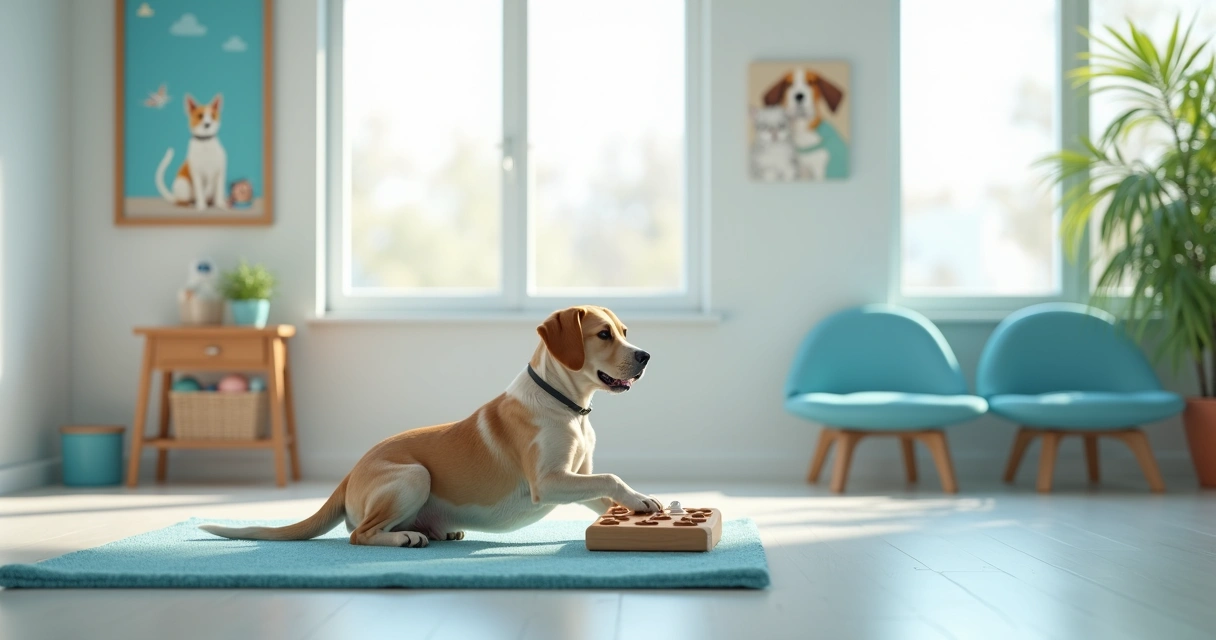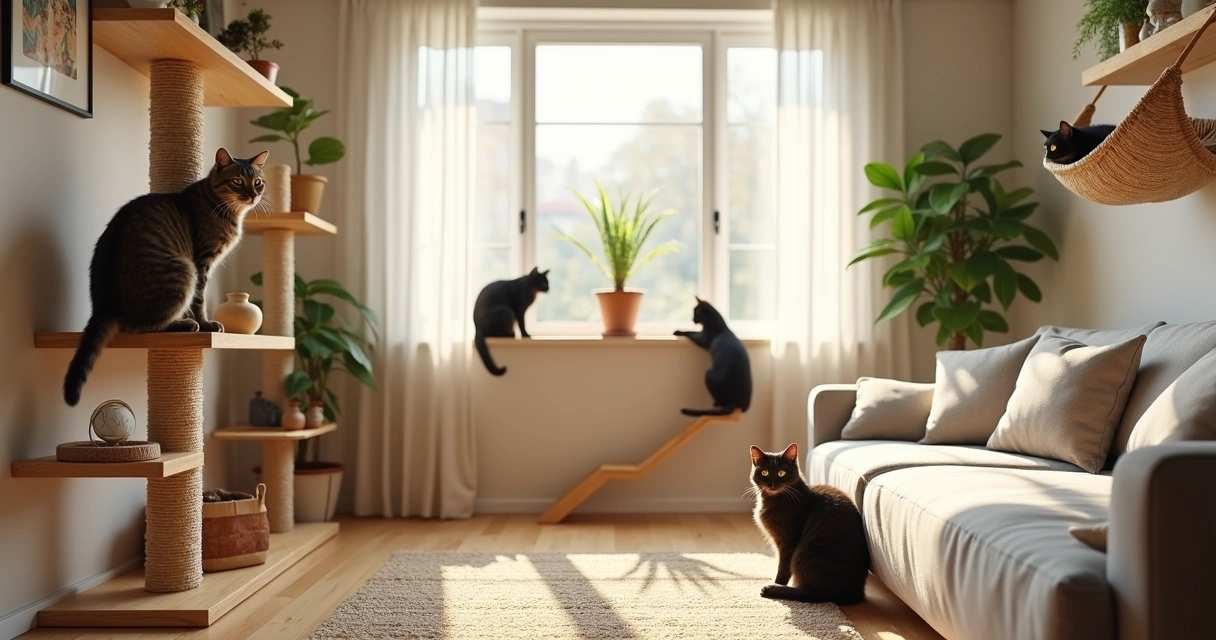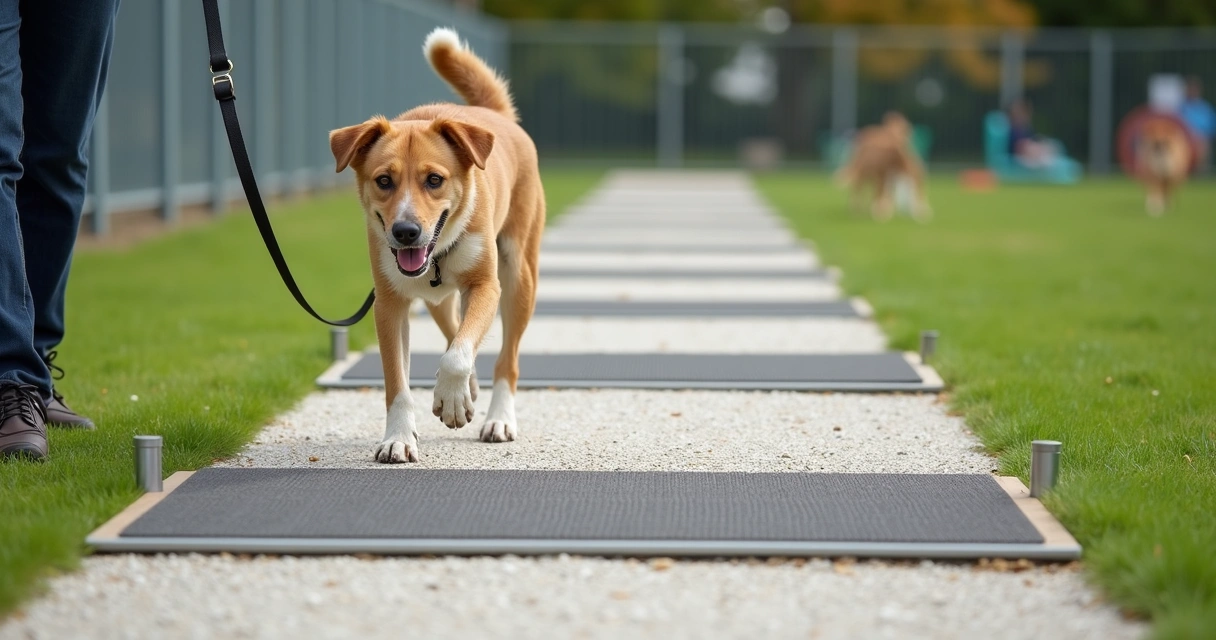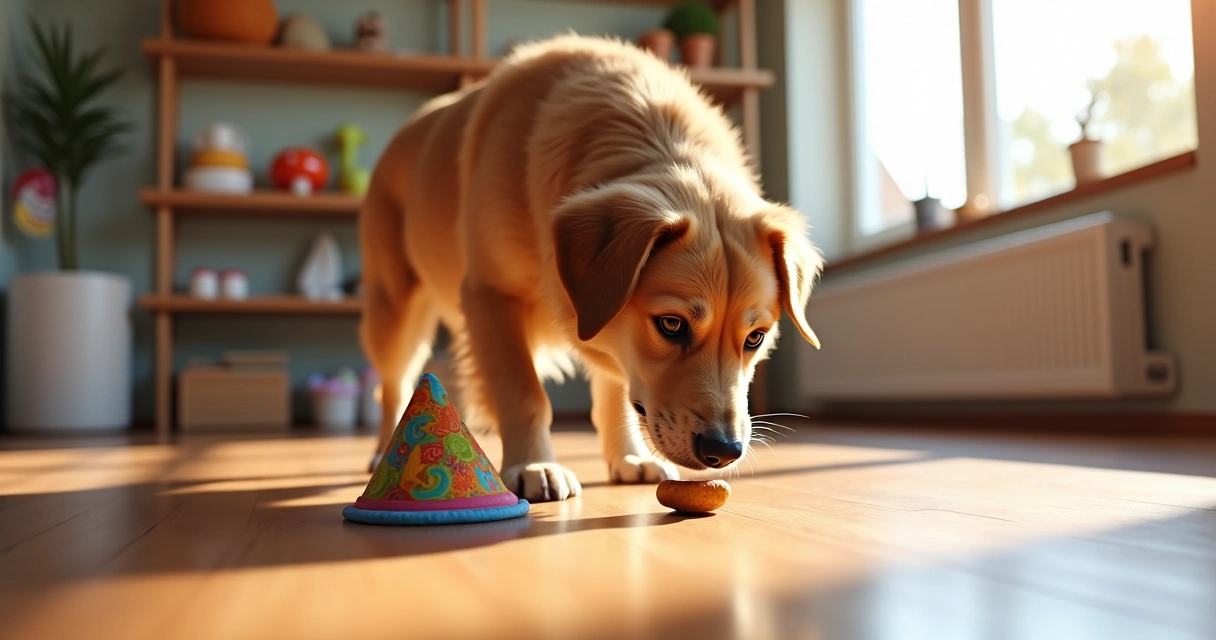Waiting at the vet’s office often feels like time standing still, not just for us but for our pets too. I’ve found that the lobby, with its chorus of muffled barks, nervous shuffling, and the faint smell of antiseptic, offers a unique challenge for keeping my dog calm and content. Many owners, myself included, worry about managing this stress for our pets—especially because research, like the findings reported by the National Center for Biotechnology Information, shows that interaction with dogs can buffer the stress response even in humans. But what about our furry companions?
Over years of visits, from puppy shots to senior checkups, I’ve experimented with different enrichment games to keep my dog’s mind busy and body relaxed in these tense moments. In this article, I’ll share five games that require only basic items and a little patience—no advanced training needed.
A few easy games can turn the anxious wait into a moment of connection.
Why enrichment games matter in the waiting room
I used to underestimate how stressful veterinary clinics could be. In one study from the University of California, Davis, common noises and unfamiliar environments were linked to canine stress. This explains why even a laid-back dog might suddenly pant, whine, or try to hide. I’ve noticed these signs in my own pets; their discomfort nudged me to find distractions that are more than just treats.
Enrichment games engage your pet’s brain and senses, reducing fear and anxiety before the actual exam. When I distract my dog with a game, I’m not just filling time—I’m helping him feel safe and grounded.

Five enrichment games to reduce stress at the vet
1. The treat trail
I often bring a small pack of my dog’s favorite treats, breaking them into tiny pieces ahead of time. This game is my first line of defense when my dog gets antsy. I quietly drop a piece behind the leg of a chair or under my foot, encouraging him with a gentle, “Find it!” Almost every dog I’ve met loves this game.
- Place treats one at a time in easy-to-reach places.
- Let your pet sniff, search, and ‘hunt’ for them.
- Build a sequence, making each treat a bit trickier to spot.
This activity keeps the nose working, which science shows is very soothing for dogs. It can even help reduce stress markers, similar to studies on the human-animal bond that found reduced heart rates when dogs are present during stress.
Scent is a gateway to calm.
2. Name that toy
I’ll admit, I have a habit of packing a favorite chew or plush toy for long waits. But instead of just handing it over, I turn it into a game. Using two or three toys, I ask my dog to “get bunny,” “get ball,” or “show me turtle.” This simple game helps him focus on me and the toys, not on the other pets or sights that might make him nervous.
- Line up two or three familiar toys.
- Give a cue to fetch or nudge a specific one.
- Offer praise or a treat for a correct response.
It’s a gentle brain teaser that taps into recognition and recall, turning waiting into a fun challenge. Many pets, especially regular clients at facilities like Dogtown, learn similar games in training sessions or daycare. For more on these enrichment approaches, I often point pet parents to the personalized training programs offered there.
3. The quiet sit-and-look
This game is subtle but powerful. When the waiting room is busy (or even loud), I sit beside my dog, touch his collar gently, and point to something across the room—maybe a poster, a plant, or even the receptionist. I ask my dog to “look.” The goal isn’t obedience, but quiet observation. Each time he looks away from his stress trigger and toward what I point to, I reward him calmly.
- Choose a quiet spot, keep your pet on a short lead by your feet.
- Point at different objects, asking for focus.
- Reward the act of looking, not the duration.
It’s surprising how effective this can be for grounding a nervous dog, changing their focus from the unknown to the familiar: you. If your dog does well with this, I’ve found similar strategies employed in daycare environments that stress individualized attention.

4. Trick refresher round
If your pet knows basic commands (“sit,” “down,” “paw,” or “touch”), the waiting room can be a great spot to polish them. I’ve watched other owners do the same and always admire how it shifts the energy. String two or three commands together, reward generously, and keep it light. If you sense stress, skip anything too challenging and return to easy cues.
- Think: “Sit… paw… touch.”
- Always reward softly and break frequently.
- If your dog is anxious, even a hand-target or spin can work.
Repeating known tricks builds confidence and directs focus away from strange noises and smells. It’s not about perfect form; it’s about positive reinforcement, which is a principle I’ve seen practiced at pet care centers like Dogtown's day camp.
5. The towel burrow
This one might sound odd, but for skittish dogs or cats, it’s magical. Grab a towel or light blanket (most pet owners have one in the car). Spread it on the seat or the floor between your feet. Hide a treat, a toy, or your hand underneath. Invite your pet to sniff, paw, or nuzzle. I call it ‘burrowing’—my dog immediately relaxes, and even cats get curious.
- Helps nervous pets ground themselves in a tactile way.
- Creates a semi-private, cozy space away from distractions.
- Can be combined with gentle petting or soft talking.
Many pets, especially those accustomed to boarding or grooming services such as Dogtown's grooming packages, appreciate the predictability and comfort that comes with a familiar object and a simple activity.
Practical tips for enrichment games at the vet
I’ve learned a few extra tricks over time that help these games go smoothly:
- Bring only soft, quiet toys and treats that don’t crumble or cause a mess.
- Respect the space of other animals—always keep your pet close.
- If your pet seems overwhelmed, lower your voice and slow your movements.
- Remember, you know your pet best—choose games that match their personality and comfort level.
- If a pet is very stressed, movement-based games may make things worse. In that case, focus on scent and observation games.
Sometimes, just sitting close and practicing slow breathing together is the best “game” of all.
Conclusion: Enrichment turns waiting into bonding
From my experience, integrating these games during a wait at the vet’s office transforms the energy of the entire visit. My pet relaxes, I relax, and we both leave feeling accomplished no matter the reason for our visit. The science backs it up: regular positive, low-stress engagement before or during stressful events has lasting benefits for both human and animal well-being (systematic review and meta-analysis of therapy dog interventions).
If you’d like to boost your pet’s enrichment skills, consider programs like those at Dogtown in Gloucester, MA, which stress individualized support and teach positive play for lasting results. You can find out more about their personalized obedience training and boarding services—perfect for building confidence before and after those clinic visits.
If you feel ready for real change, reach out to Dogtown for a pre-enrollment assessment. Let us help you turn every moment—even those tense waits—into an experience of joy for your pet.
Frequently Asked Questions
What are enrichment games for vets?
Enrichment games for vet visits are simple activities or exercises designed to help pets feel calm, stay mentally active, and reduce anxiety while waiting in a clinic environment. These can include finding hidden treats, focusing on toys, practicing tricks, or calming observation games. The main goal is to make the wait less stressful and support positive behavior during veterinary appointments.
How to calm my pet at the vet?
The best way to calm your pet at the vet is by offering familiar cues, gentle touch, and low-stress activities like scent games or trick practice. Bring items from home, avoid loud noises, and pay attention to your pet's comfort level. Practicing relaxation techniques or short games can help shift your pet's focus away from anxiety triggers, as supported by scientific findings (self-reported stress study).
Are enrichment games safe for anxious pets?
Most enrichment games are safe and even beneficial for anxious pets when chosen with care and tailored to the animal’s needs. Avoid games that are overly stimulating or that require lots of movement in confined spaces. Start with scent-based or calm observation games. Always supervise closely and adjust or stop any game that seems to distress your pet further.
What items do I need for these games?
You just need a few basics: small, soft treats; a couple of quiet toys; and perhaps a towel or blanket. For scent and trick games, that is usually enough. Items should be familiar and easy to manage in a small space. Some owners find that prepping these essentials in a bag helps make each vet visit smoother and more enjoyable.
Can I use these games at home?
Absolutely, these enrichment games work just as well at home, and regular practice there actually builds the habits and comfort your pet will need at the vet. Many pet owners who use daycare, training, or boarding services like those at Dogtown notice that their pets adapt more quickly to new environments when familiar games are part of their daily routine.





